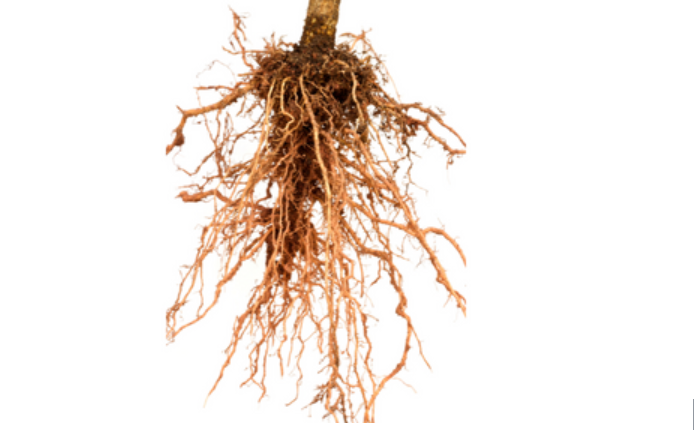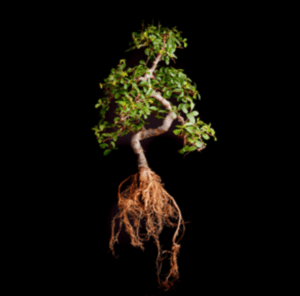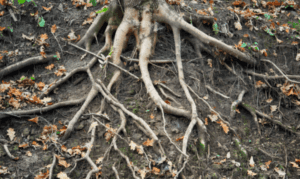
Did you know that trees can grow new roots? It's true! In fact, there are a few different ways that trees can grow new roots. One way is through lateral root growth. This type of root growth happens when the tree spreads its roots out in all directions. Another way trees can grow new roots is through basal root growth. Basal root growth happens when the tree's main root (or trunk) grows a new set of roots. Finally, trees can also grow new roots via epicormic shoots. Epicormic shoots are young branches that sprout from the tree's trunk or from older branches. Did you also know that the roots of trees can grow even faster than the branches? In this blog post, we will discuss the growth of trees and tree roots. We will explore how they grow, what factors influence their growth, and how these roots can affect your plumbing!
Tree Root Growth
Tree roots can grow in three different ways. Adventitious root growth occurs when trees develop new roots from the stem or main trunk of the tree. These adventitious roots are usually shallow and often lack structural strength. This type of root growth is common among trees that live in swampy or marshy areas, where there is little soil to support the trees' root systems.
Secondary root growth is the second type of tree root growth that occurs when trees produce new roots from their existing lateral or side roots. This type of root growth is common among trees growing in soil, such as those rooted in urban environments. These secondary roots are typically much deeper and have more structural strength than adventitious roots.
The third type of tree root growth is called taproot growth, and it is most common among trees that live in dry climates. Taproots are large, deep primary roots that grow downward into the ground and are used to draw up water from deep underground sources. These trees often have secondary lateral roots which spread out laterally along the ground and act as a stabilizing anchor for the tree. Taproots can grow hundreds of feet deep, giving trees in dry climates access to underground water reserves not available to trees growing in moist soils.

No matter what type of root growth trees use, they rely on their roots to absorb nutrients, draw up water, and provide mechanical support for the trees. Trees must also be able to spread their root systems out to obtain enough space for growth and stability. By observing trees in various landscapes, scientists have been able to learn a great deal about trees and gain insight into how they function within ecosystems. Through understanding trees' root systems, we can better understand how trees interact with their environment and what factors contribute to their growth and survival.
Factors That Influence Growth
The main factors influencing trees’ root systems are soil type, water availability, and climate. Soils vary in composition and structure, which impacts trees’ ability to obtain nutrients and water from the ground. In dryer climates, trees have adapted by developing deeper roots in order to reach below the dry surface soil layer and access the water table. Climate also has an impact on trees’ root systems, with cold climates forcing trees to develop shorter, more widespread roots in order to keep them from freezing during winter months.
Tree root growth is also affected by competition for resources such as nutrients and water. Trees that are close together will compete for these resources, causing trees to develop different root systems in order to access what they need. Trees can either grow roots into new soil or spread their existing roots wider and deeper. When trees compete for a single resource, such as water, trees will typically focus their root growth toward the source of that resource.

Overall, trees’ root systems are incredibly diverse and complex. Tree roots provide trees with the stability they need to thrive, as well as important functions like water absorption and anchoring trees into place. Understanding trees’ root systems is key to growing healthy, stable trees that can survive in all types of environments. With proper knowledge, tree caretakers can help ensure that their trees have strong, deep root systems with access to the resources they need.
How Tree Roots Affect Plumbing
When trees’ roots grow too close to a home’s plumbing system, they can cause major damage. This is most commonly due to the trees’ search for water and nutrients. Tree roots may be attracted to the moisture in or around pipes or seek out nitrogen and phosphorus found in wastewater. If tree roots are able to penetrate a pipe, they can cause severe blockages and even break pipes. To prevent this kind of damage, trees should be planted at least 10 feet away from the home’s plumbing system.
Tree roots can also cause damage to the foundation of a home. As trees’ root systems grow and expand, they may push up against the foundations and walls, causing cracking or other structural damage. Additionally, trees with large root systems can cause issues with retaining walls and walkways if their roots become too invasive. Homeowners should be sure to have trees that have a shallow root system and plan for trees to be planted away from any home structures.
How to Ensure Your Plumbing is Not Affected by Tree Root Growth
Planting trees with shallow root systems and selecting trees that will not grow to be too large can help prevent any damage to the home’s plumbing system. When choosing trees, homeowners should look for trees that have a maximum height of at least 20 feet or less, such as maple trees. It is also important not to plant trees next to drain lines, as trees with long roots can cause the pipes to break or become clogged.
In addition to selecting trees carefully, it is important for homeowners to regularly inspect their plumbing system for any signs of tree root damage. Common signs include slow draining or complete blockages in the drainage system and louder than normal gurgling noises coming from the drain lines. If any of these signs are present, it is important to contact a professional plumber who can determine the cause and propose an effective solution.
By taking the necessary steps, homeowners can ensure trees and tree root growth do not cause damage to their plumbing system.

How This Time of Year is Affected
Here in California, we are in the midst of the rainy season. This is a wet time for us which influences a lot of tree root growth. Here at Oak Plumbing, we see a lot of clients dealing with broken pipes, blocked drainage, and other plumbing disasters due to the fast growing nature of trees. Keep an eye on your plumbing, or contact us, so we may be able to help prevent any plumbing emergencies from arising. You may already have a plumbing emergency that you can’t see with your own eyes. Let our team of professionals come check your plumbing out and help you save money in the future.

